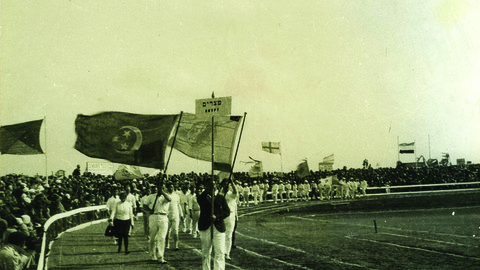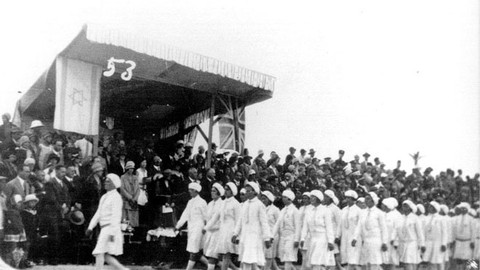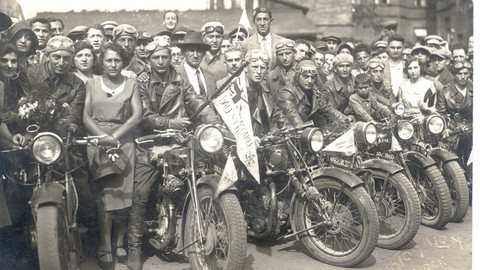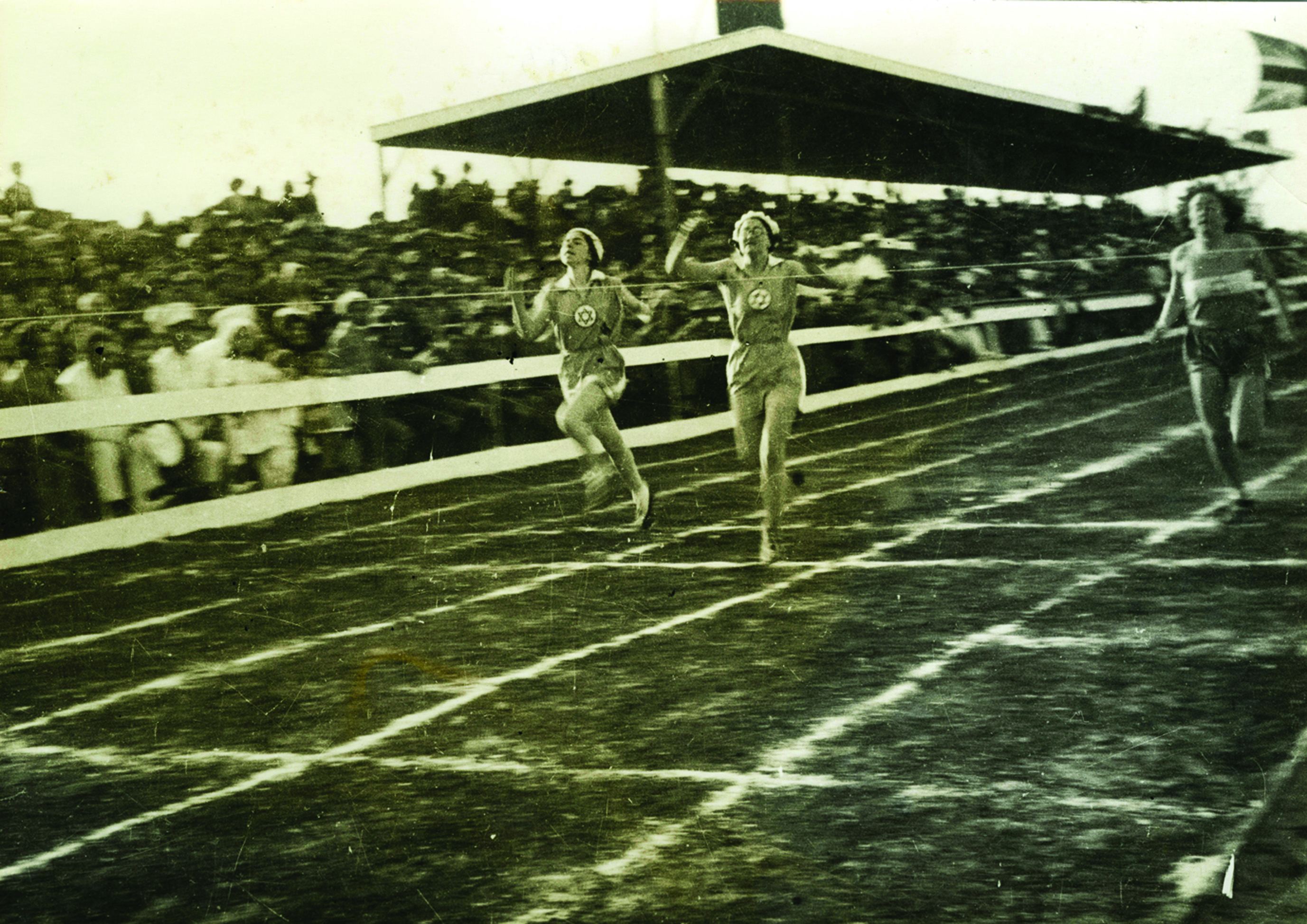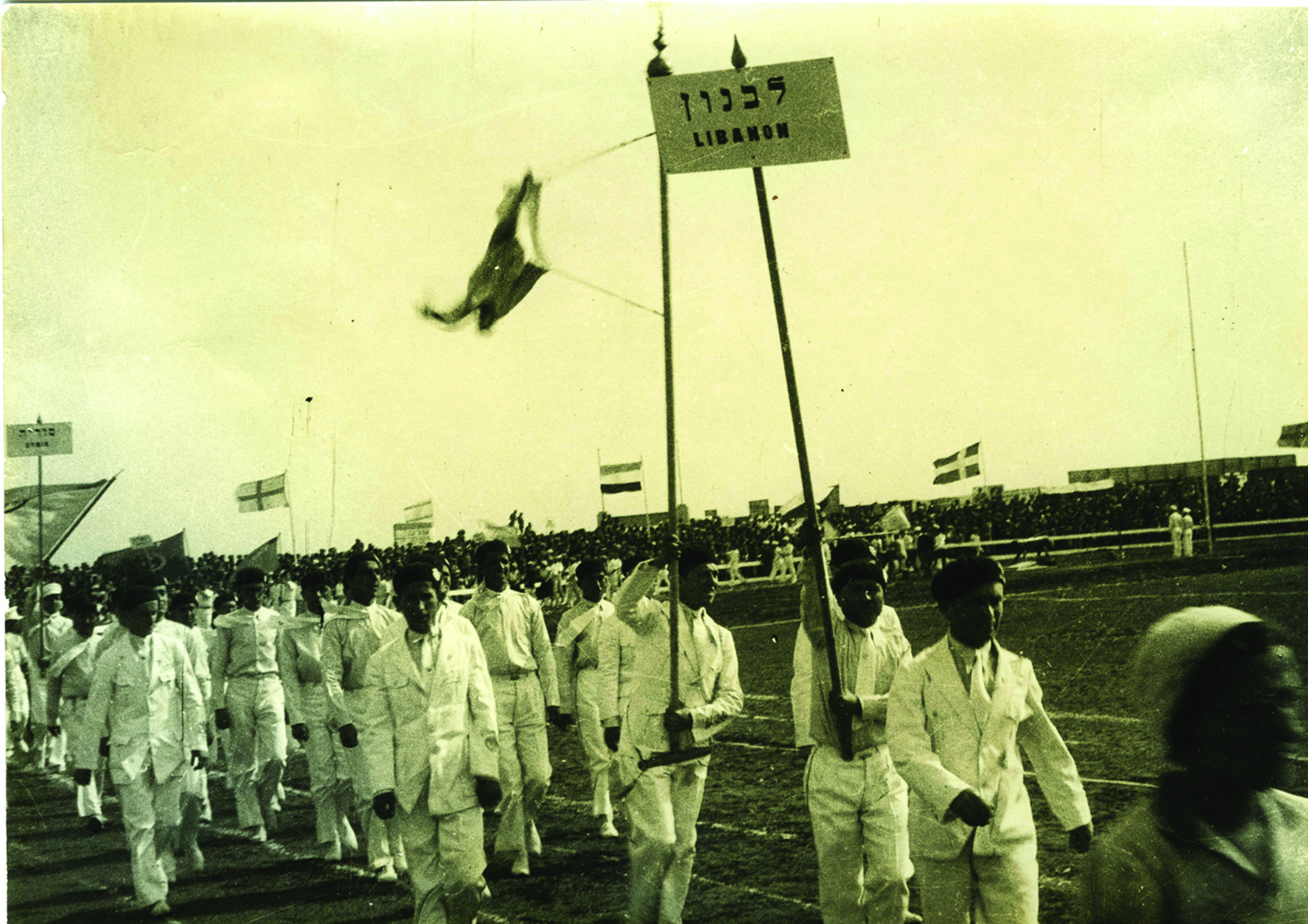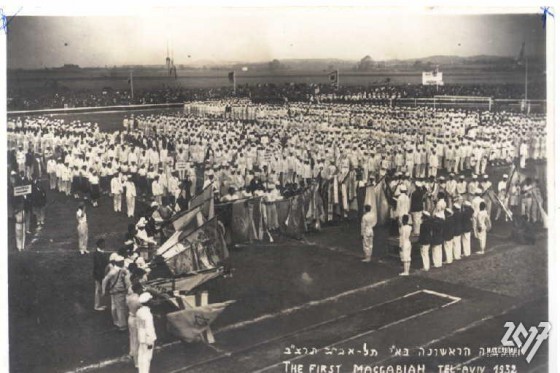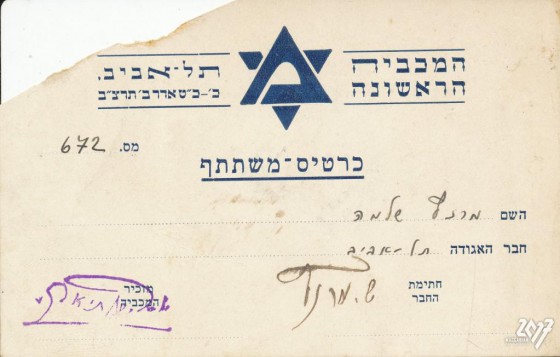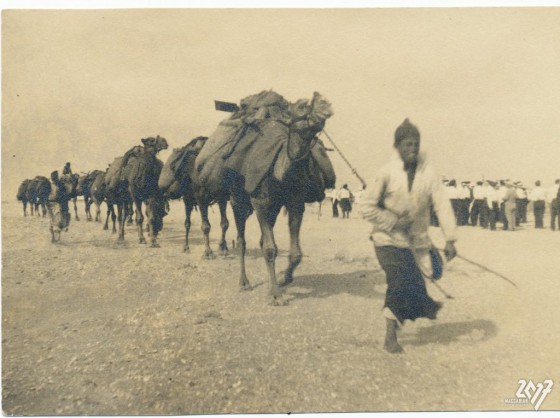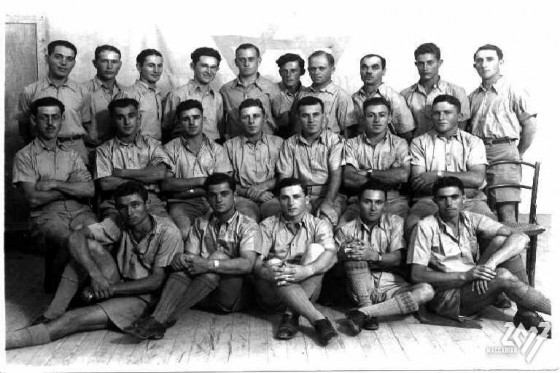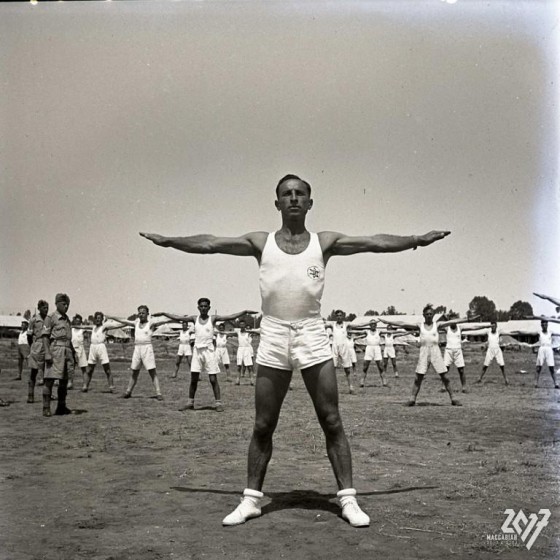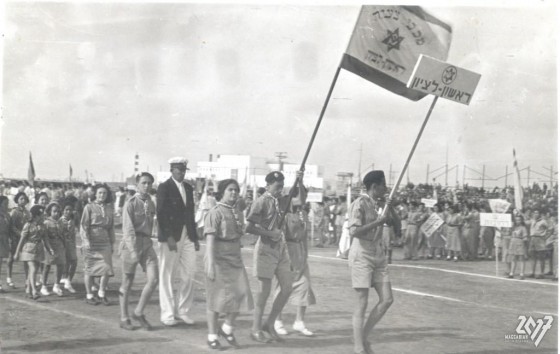The First Maccabiah: 5692
390 Jewish athletes from 18 countries including sixty from Arab lands (Syria and Egypt), participated in the First Maccabiah. At the Opening Ceremony in Maccabi Stadium, 2,500 gymnasts put on an impressive display of showmanship. The stadium, the first of its kind in Eretz Israel, built on the sands of north Tel Aviv between the mouth of the Yarkon River and the Mediterranean Sea, was completed on the eve of the Opening Ceremony. Until the last minute carpenters were working diligently and convoys of wagons brimming with sand were making their way to the stadium that had suddenly emerged in north Tel Aviv.
Countries who took part:
- Austria
- Great Britain
- Bulgaria
- Danzig
- Denmark
- Greece
- Yugoslavia
- Lebanon
- Syria
- Latvia
- Egypt
- Lithuania
- Poland
- Czechoslvakia
- Romania
- Switzerland
- Palestine
A famous photograph depicts the first mayor of Tel Aviv, Meir Dizengoff, on a white stallion leading a column of riders, struggling with the wet sand on the way to the stadium. Swordsmen led by the renown Shomer from Petach Tikva, Avraham Shapira, formed the Color Guard. Leaders of world Zionism, among them Henrietta Szold, the mother of Youth Aliyah, Lord Melchett, Nachum Sokolov, and Chaim Nachman Bialik (national poet) sat at the dais, graced by the flags of the British Mandate and Tel Aviv flying side by side. Before the parading delegations arrived, unidentified persons had managed to hand out leaflets calling for an end to British rule keeping the Palestine Police hot in their pursuit.
The processional of participants was one of the highlights of the First Maccabiah. Large crowds took up places by the roadsides, particularly near Herzliya Gymnasium (Shalom Towers today)
where the parade began. The Austrian delegation carried Herzl’s flag, described by the prophet of the State of Israel in his book, The Jewish State; the Bulgarian delegation brought its own orchestra. The United States delegation was the smallest -- only ten participants -- although all were of world renown.
There were also delegations from Syria and Egypt. The Latvians surprised everyone by marching in their gym suits instead of the official uniform. Whoever witnessed the Maccabiah felt as though s/he was taking part in an event of historic import.
ׂLittle Tel Aviv׃ of 1932 was unaccustomed to hosting an international event of any sort. The population of the city was only 50,000 out of a total Jewish community in Eretz Israel of 180,000. The Maccabiah was sandwiched between two important Tel Aviv events -- the Purim Adloyada Procession and the Oriental Fair Exhibit, scheduled to open that April on the banks of the Yarkon.
The many guests from the Diaspora who arrived for the games were, nevertheless, warmly received by Tel Aviv residents. The competitors were housed in tents, private homes, classrooms and in the neighboring towns of Rishon LeZion and Ramat Gan.
At the First Maccabiah there was no adequate sports equipment for several events; there was no suitable gymnasium; with only 500 seats and standing room for 15,000, the stadium could not accommodate all. In spite of this, however, all the events took place as scheduled. The track was prepared from coal contributed by the Israel Railways. Gymnastic events were combined with boxing and wrestling and were held on a wooden platform in open-air Gan Rina. Swimming and water polo competitions were held in Haifa port in an area marked off by rowboats and buoys; spectators sat on rafts that bobbed up and down in the water.... The 10,000 meter race was run outside the stadium on the streets of Tel Aviv and along the seashore on a ׂtrack׃ 70% paved and 30% sand.
There were competitions and games in 16 events - track and field, gymnastics, boxing, wrestling, fencing, swimming, tennis, table tennis, motorcycling, grass hockey, handball, basketball, soccer, water polo, diving and equestrian skills.
Poland scored highest in the overall competitions (368 points). Austria was second (281 points) and the United States third (272 points.) Eretz Israel placed a mere fifth (243.5 points.) The competitions were conducted, by and large, in Yiddish, sometimes in Hebrew. Registration for the competitions was held, symbolically, in Immigrants’ Hall and the staff ran the Maccabiah from the Allenby Hotel in Tel Aviv.
The estimated budget for the Maccabiah was 3,500 Eretz Israel pounds; the first Maccabiah concluded with a deficit of more than 1,038 Eretz Israel pounds.
Advertisements which appeared in the streets of Tel Aviv had proclaimed that the competitions were ׂan opportunity which shall not arise until the Second Maccabiah to see the extolled champions.׃ And so it was. Hyman from the
The United States set a record of 11.2 seconds for the 100 meter race -- one second from the world record. Kessler from Lvov was boxing champion in Poland. The tennis player Hecht, star of the Czech Davis Cup Team, was as famous in Europe as Bjorn Berg in the 80s and the Gottesman brothers became famous names in Israeli tennis. Among the wrestling champions were Chafetz of Egypt, Hershel of Vienna (The Wrestling Artist of Europe) and Kurland and Lazerovich of Denmark.
Officially the first Maccabiah lasted only three days. It concluded on the same exalted note as it began, marking fifty years since the aliya of the Biluim and the founding of the first settlements in Eretz Israel.


